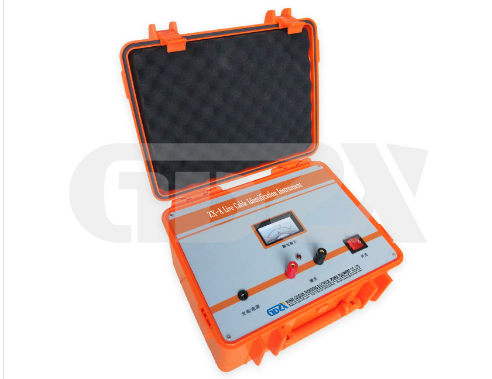NEWSnews
Decoding Cable Chaos: The ZX-A Live/Dead Cable Identifier in Action
Introduction: The Persistent Problem of Cable Identification
For technicians working on power cable installation, migration, maintenance, or fault finding, few tasks are as fundamental – and potentially frustrating – as identifying a specific cable within a tightly packed bundle. Traditional methods, like phasing out cables (requiring isolation and sequential testing) or relying solely on tracer signals (often ineffective on live cables or susceptible to bleed-over), are time-consuming, can necessitate outages, and carry inherent safety risks, especially when dealing with live circuits. The ZX-A Live Cable Identification Instrument directly addresses these challenges, offering a safer, faster, and more reliable solution.
How the ZX-A Works: Smart Signals and Phase Detection
The ZX-A's core innovation lies in its intelligent signal processing:
Transmitter: A microcontroller generates a unique, digitally encoded signal. This signal is amplified to a significant 30A peak pulse current (repeating every 2 seconds) and fed into the target cable. Critically, the transmitter can couple this signal onto the cable using large-caliber clamps, working without interrupting service on live cables or providing power for de-energized ones.
Receiver: The handheld receiver, tuned to the transmitter's frequency, detects the signal coupled onto cables within the bundle. Its internal microcontroller doesn't just detect presence; it decodes the signal and analyzes its phase characteristics relative to the original transmission.
Identification: The key differentiator is phase uniqueness. The signal induced on the target cable (the one carrying the transmitter's current) exhibits a distinct phase relationship dictated by the encoding. Signals induced on adjacent cables through electromagnetic coupling exhibit measurably different phase characteristics. The receiver compares this phase and clearly indicates the target cable based on this unique signature.
Key Features & Advantages Over Traditional Methods
Live AND Dead Cable Capability (Dual Mode): This is a major leap forward.
Traditional Limitation: Identifying a specific live cable safely was extremely difficult or required risky procedures. Tracer methods often failed or gave ambiguous results on live circuits.
ZX-A Advantage: Non-contact coupling allows safe, positive identification of live cables without shutdowns. It seamlessly handles de-energized cables too. This dual functionality drastically reduces downtime planning and execution risks.
Phase-Encoded Precision:
Traditional Limitation: Simple tone tracers can suffer from "bleed-over" where the signal is detected on multiple adjacent cables, leading to confusion.
ZX-A Advantage: The phase detection algorithm specifically filters out signals that are merely coupled inductively. Only the cable carrying the uniquely encoded current signal exhibits the correct phase, enabling unambiguous identification even in dense bundles.
Speed and Operational Simplicity:
Traditional Limitation: Phasing out requires sequential isolation and testing per cable, a laborious process taking potentially hours for large bundles.
ZX-A Advantage: Clamp the transmitter on, scan with the receiver. Positive identification typically occurs within seconds per cable scanned. The process is intuitive and requires minimal training.
True Portability for Field Use:
Traditional Limitation: Some identification setups are bulky or require external AC power.
ZX-A Advantage: Entirely lithium battery-powered (Transmitter: Rechargeable pack, Receiver: 2x AA batteries). The transmitter offers 3-5 hours continuous operation, the receiver lasts significantly longer. Combined with its compact form factor (Transmitter: 8kg, Receiver: 0.2kg), it's genuinely field-deployable anywhere.
Safety Enhancement:
Traditional Limitation: Working on or near live cables during identification increases arc flash and shock risks.
ZX-A Advantage: Non-contact coupling minimizes direct interaction with live conductors during the identification phase itself.
Technical Specifications at a Glance
Component | Parameter | Specification |
Transmitter | Max. Pulse Peak Output Current | 30A |
Pulse Repetition Frequency | 1 time / 2 seconds | |
Power Source / Charging | Li-Ion Battery / DC 12V | |
Mains Input (Charging) | AC 220V ±10% | |
Weight | 8 kg | |
Receiver | Sensitivity | 40dB |
Power Source | 2x AA Batteries | |
Weight | 0.2 kg |
Conclusion: An Essential Tool for Modern Cable Work
The ZX-A Live Cable Identification Instrument represents a significant technological advancement for power cable technicians. By combining safe live/dead cable identification, phase-encoded signal precision for unambiguous results, remarkable speed, and true field portability, it directly overcomes the limitations of older, more cumbersome, and less reliable methods. Its ability to accurately pinpoint a specific cable within minutes, often without requiring outages, translates directly into reduced labor costs, minimized downtime, and enhanced job site safety. For any team involved in power cable construction, maintenance, or fault location, the ZX-A has become an indispensable piece of test equipment, fundamentally changing the efficiency and safety of cable identification tasks.
GDZX is a manufacturer of power detection equipment, offering a diverse range of products with comprehensive models and providing professional technical support. Contact us at +86-27-6552607 or +86-17396104357.Website: http://en.gdzxdl.com/






















